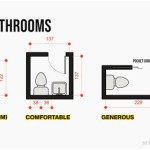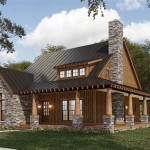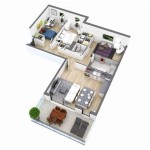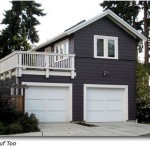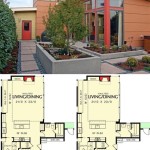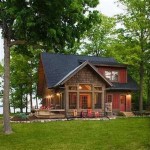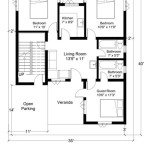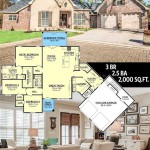3D rendering of house plans is an invaluable tool for architects, designers, and homeowners alike. By using 3D technology, plans can be visualized in an immersive, realistic manner, allowing for better assessment of the design, materials, and intended layout. In this comprehensive guide, we will explore the basics of 3D rendering, common techniques and software used for rendering, and considerations to keep in mind when creating 3D renderings of house plans.
What is 3D Rendering?
3D rendering is the process of creating images from 3D models. It is a form of 3D computer graphics that uses computer-generated imagery to create photorealistic models of objects or environments. The process involves creating a 3D model of the object or environment, then adding lighting and textures to produce a realistic image. 3D rendering of house plans is often used to visualize the design of a home before it is constructed.
Common Techniques and Software Used for Rendering
There are a variety of techniques and software used for 3D rendering of house plans. 3D rendering software such as 3ds Max, Maya, and Blender are popular tools used by architects and designers to create photorealistic renderings of house plans. These programs allow users to create detailed 3D models of a home and experiment with different materials, textures, and lighting to produce realistic renderings. Rendering can be done using ray tracing, which uses light rays to calculate reflections and shadows in a scene, or global illumination, which uses algorithms to simulate the way light bounces off of objects in a scene.
Considerations to Keep in Mind
When creating 3D renderings of house plans, there are several factors to keep in mind. It is important to ensure that the 3D model is accurate and that the materials, textures, and lighting accurately reflect the intended design. Additionally, it is important to consider the cost of the software and render time; 3D rendering can be time-consuming and costly depending on the complexity of the scene. Finally, it is important to keep in mind the intended purpose of the rendering; if the 3D rendering is intended to be used for marketing purposes, it is important to ensure that the visuals are attractive and accurate.
Conclusion
3D rendering of house plans is a powerful tool for architects, designers, and homeowners alike. By using 3D technology, plans can be visualized in an immersive, realistic manner, allowing for better assessment of the design, materials, and intended layout. When creating 3D renderings, it is important to consider the accuracy of the 3D model, the cost of the software and render time, and the intended purpose of the rendering. By following this comprehensive guide, you will be well-equipped to create beautiful and realistic 3D renderings of house plans.















Related Posts

